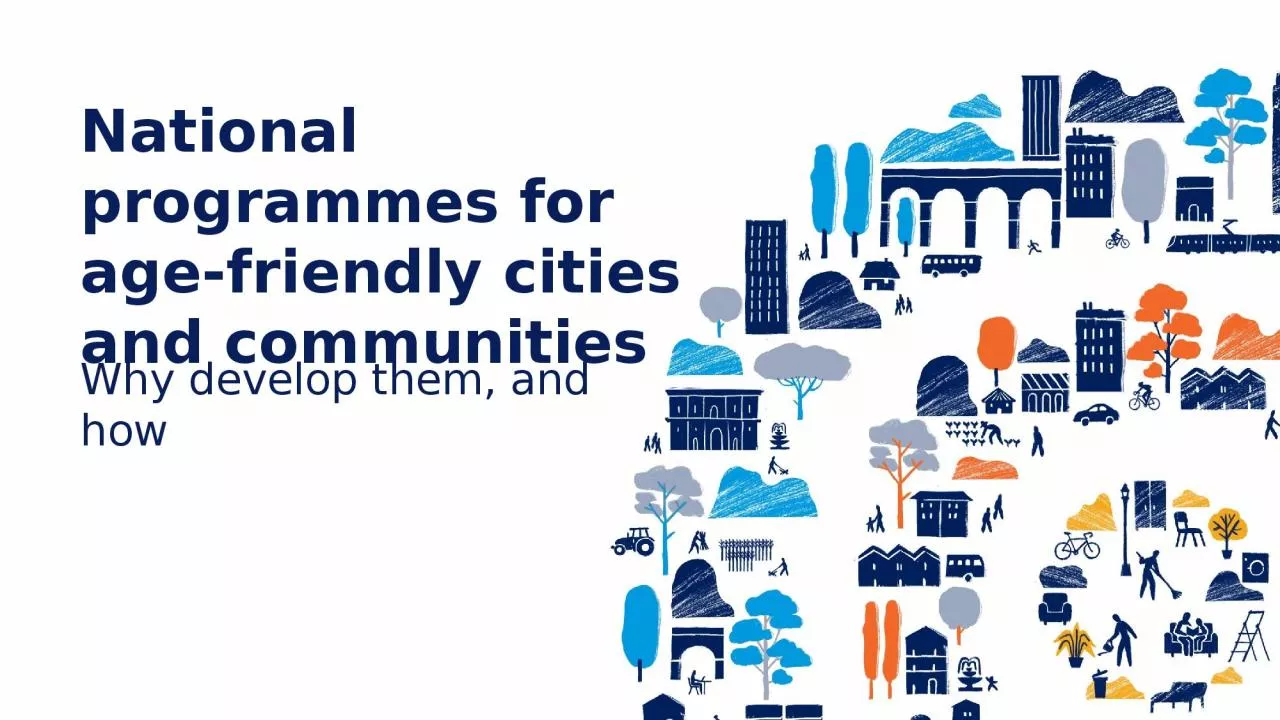

Why develop them and how We are living longer but not yet healthier Our environments are key to closing the gaps Environments comprise all the factors in the outside world that form the context of an individuals life ID: 1027737
Download Presentation The PPT/PDF document "National programmes for age-friendly cit..." is the property of its rightful owner. Permission is granted to download and print the materials on this web site for personal, non-commercial use only, and to display it on your personal computer provided you do not modify the materials and that you retain all copyright notices contained in the materials. By downloading content from our website, you accept the terms of this agreement.
1. National programmes for age-friendly cities and communitiesWhy develop them, and how
2. We are living longer, but not (yet) healthier
3. Our environments are key to closing the gapsEnvironments comprise all the factors in the outside world that form the context of an individual’s life. These include home, communities, and the broader society. Within these environments are a range of factors, including the built environment, people and their relationships, attitudes and values, health and social policies, the systems that support them, and the services that they implement. HousingAssistive technologiesTransportSocial facilities
4. Age-friendly environments enable all people to:age well in a place that is right for themcontinue to develop personallybe includedcontribute to their communitiesenjoy independence and good health
5. Age-friendly environments benefit all community members by removing physical and social barriers and fostering inclusiveness. This not only benefits older people. It also improves accessibility, addresses gender inequities, and helps build the resilience of communities for emergencies.
6. Creating age-friendly environments is also one of the action areas of the UN Decade of Healthy Ageing (2021–2030).The Decade is aligned with the 2030 Agenda for Sustainable Development and a commitment by all Member States to improve the lives of current and future generations of older people.
7. Developing age-friendly cities and communities is a proven way to create age-friendly environments.Age-friendly cities and communities improve access to key services and enable people to be and do what they value through action across eight domains:
8. The benefits are demonstrated daily by the WHO Global Network for Age-friendly Cities and Communities, featuring over 1400 members across 51 countries all committed to becoming more age-friendly.Learn more about the Global Network here:
9. For example, the Global Database of Age-friendly Practices features over 700 concrete activities implemented by Global Network members to make their communities better places to grow older.
10. National programmes are one way for countries to accelerate the development of age-friendly cities and communities. They:Enable countries to deliver on global commitments, such as the UN Decade of Healthy AgeingInspire and support local action in both rural and urban areasEnsure more people can age with health and well-being
11. There are already successful examples of national programmes for age-friendly cities and communities around the world.Here is what some of them have to say about their benefits:
12. A new guide and toolkit is available from WHO to support countries in developing national programmes for age-friendly cities and communities. It includes:A practical step-by-step framework covering planning, implementation, evaluation, and reflectionDetailed case studies from existing national programmesKey contacts for support… and much more
13. For more support and to access the guide, visit WHO’s resource hub on national programmes for age-friendly cities and communitiesJoin the WHO Global Network for Age-friendly Cities and Communities to connect with others, be inspired, and receive supportTogether, we can create an age-friendly world